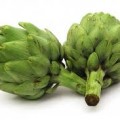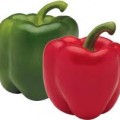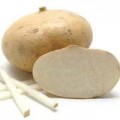[Intro text]
Botanical Information
Taxonomy
Tropaeolum majus
History
Physical Description
Annual; grows to 12″ tall; richly colored red, orange, or yellow flowers from midsummer until the first frost; leaves have a distinctive round shape
Varieties & Cultivars
Categories or Types of [plantname]
Colors Available
Varieties (link to ../category/cultivars/tag/[plantname])
Growth Requirements
Climate & Temperature Requirements
Air Temperature
Soil Temperature
Humidity
Day Length or Light Requirements
Flowering is most productive in full sun
Site Conditions Favored
Soil Requirements
Soil Texture
pH
Nutrient Requirements
Avoid fertilization; plants in highly fertile soil produce lush foliage but few flowers
Propagation
Methods of propagation
Seed
Sow seeds 1/2″ deep in early spring
Division
Cuttings
Transplanting or Potting Up
Seed Saving
Planting Out
Bed Prep & Soil Amendments
Bed Spacing
Row Spacing
Planting Depth
Alternative Bed Methods
Container Gardening
Indoors, nasturtium can be grown in a south window; fertilize with half-strength houseplant fertilizer once a month, water sparingly, and use a course, porous potting mix
Routine Cultivation & Maintenance
Water Requirements
Fertilization Recommendations
Avoid fertilization; plants in highly fertile soil produce lush foliage but few flowers
Mulching & Weeding
Pinching or Pruning & Dividing
Support
Winterizing
Companion Planting
Helpful Companions
Harmful Companions
Companion to..
Pests, Diseases & Problems
Common Pests
Common Diseases
Symptoms
Whole Plant
Leaves
Stem/Trunk
Flowers
Fruit
Roots
Harvesting & Storage
Edible Parts of the Plant
Flowers have a peppery, zesty taste that can substitute for mustard in sandwiches
Yield
Days to Harvest / Harvest Timing
Flowers: from midsummer until the first frost
Harvest Methods
Storage of harvest
Fresh
Canned
Frozen
Pickled
Stored in vinegar, nasturtium petals are great added to salads or sandwiches
Dried
Cooking
Nutritional Benefits & Values
Toxicity
Cooking
Preparation
Cooking Methods
Recipes (link to …/category/recipes/tag/[plantname])
Nasturtium flowers have a peppery, zesty taste and can be used in place of mustard
- add to sandwiches
- add to salads
- use as s a garnish
- adds color when mixed into butter
- make nasturtium vinegar
Resources
Information for this article was taken from these sources. (link to …/category/resources/tag/[plantname])




